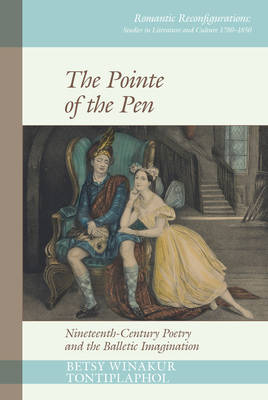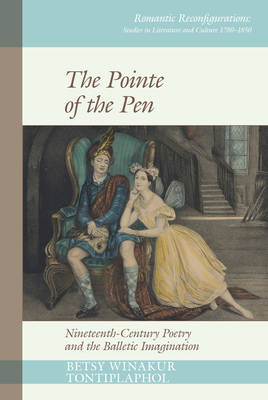
- Retrait gratuit dans votre magasin Club
- 7.000.000 titres dans notre catalogue
- Payer en toute sécurité
- Toujours un magasin près de chez vous
- Retrait gratuit dans votre magasin Club
- 7.000.0000 titres dans notre catalogue
- Payer en toute sécurité
- Toujours un magasin près de chez vous
The Pointe of the Pen
Nineteenth-Century Poetry and the Balletic Imagination
Betsy Winakur TontiplapholDescription
Originally a courtly art, ballet experienced dramatic evolution (but never, significantly, the
prospect of extinction) as attitudes toward courtliness itself shifted in the aftermath of the French Revolution. As a result, it afforded a valuable model to poets who, like Wordsworth and his successors, aspired to make the traditionally codified, formal, and, to some degree, aristocratic art of poetry compatible with "the very language of men" and, therefore, relevant to a new
class of readers. Moreover, as a model, ballet was visible as well as valuable. Dance historians recount the extraordinary popularity of ballet and its practitioners in the nineteenth century, and The Pointe of the Pen challenges literary historians' assertions - sometimes implicit, sometimes explicit - that writers were immune to the balletomania that shaped both Romantic and Victorian England, as well as Europe more broadly. The book draws on both primary documents (such as dance treatises and performance reviews) and scholarly histories of dance to describe the ways in which ballet's unique culture and aesthetic manifest in the forms, images, and ideologies of significant poems by Wordsworth, Byron, Shelley, and Barrett Browning.
Spécifications
Parties prenantes
- Auteur(s) :
- Editeur:
Contenu
- Nombre de pages :
- 240
- Langue:
- Anglais
- Collection :
- Tome:
- n° 15
Caractéristiques
- EAN:
- 9781802073607
- Date de parution :
- 01-03-24
- Format:
- Livre broché
- Format numérique:
- Trade paperback (VS)
- Dimensions :
- 156 mm x 234 mm
- Poids :
- 344 g

Les avis
Nous publions uniquement les avis qui respectent les conditions requises. Consultez nos conditions pour les avis.






